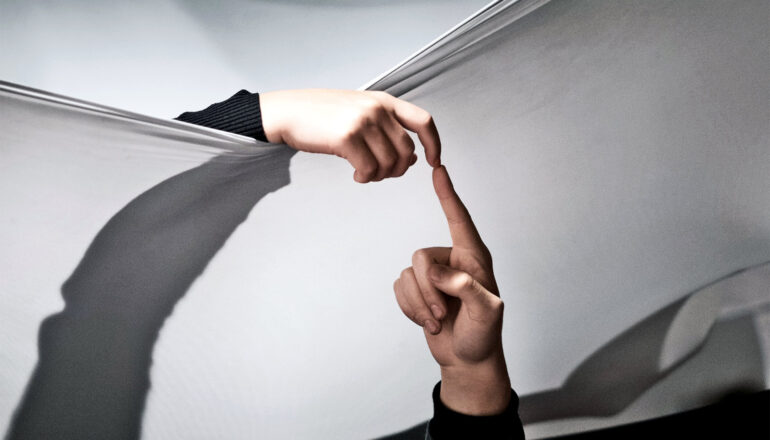Fabric that mimics skin gives robots sense of touch
- Researchers have developed an electronic textile that mimics human skin to give robots a sense of touch, enabling them to grasp and manipulate objects more effectively.
- The technology, described in a study published in Nature Communications, allows robots to detect pressure, slipping, and movement of objects, similar to how human nerves sense these sensations.
- The applications of this technology are vast, including manufacturing tasks, robotic surgery tools, prosthetic limbs, and improving human-robot collaboration.
- Researchers integrated the sensing system onto a pair of 3D-printed robotic fingers, which can detect slippage and adjust its grip force to enable in-hand manipulation tasks that were previously difficult for robots.
- The sensor’s response time is comparable to human capabilities, with reaction times ranging from 1-50 milliseconds, making it a promising step towards creating robots that can interact with the world like humans do.

A new electronic textile under development aims to improve robots’ sense of touch.
Robots excel at many things, but having a good sense of touch is not among them. Whether dropping items or pinching them too tightly which crushes the object, many robots struggle with these basic skills that humans have mastered.
Over the years scientists have equipped robots with cameras and other tools that enable the machines to better sense objects. But a simple and cost-effective solution remains elusive.
The new technology, described in a study in Nature Communications, mimics how nerves in our hands sense pressure and slipping while grasping objects.
“The applications are very exciting…,” says Jun Liu, assistant professor in the University at Buffalo mechanical and aerospace engineering department in the School of Engineering and Applied Sciences.
“The technology could be used in manufacturing tasks like assembling products and packaging them—basically any situation where humans and robots collaborate. It could also help improve robotic surgery tools and prosthetic limbs.”
Liu, also a core faculty member of UB’s RENEW Institute, is the study’s corresponding author. Additional authors include Ehsan Esfahani, associate professor in the mechanical and aerospace engineering department, several UB students, and a former UB PhD student from Liu’s group who is now a postdoctoral scholar at the University of Chicago.
“Our sensor functions like human skin—it’s flexible, highly sensitive, and uniquely capable of detecting not just pressure, but also subtle slip and movement of objects,” says Vashin Gautham, a PhD candidate in the Liu research group and first author of the study.
“It’s like giving machines a real sense of touch and grip, and this breakthrough could transform how robots, prosthetics, and human-machine interaction systems interact with the world around them.”
Researchers integrated the sensing system onto a pair of 3D-printed robotic fingers, which are mounted to a compliant robotic gripper developed by Esfahani’s group.
“The integration of this sensor allows the robotic gripper to detect slippage and dynamically adjust its compliance and grip force, enabling in-hand manipulation tasks that were previously difficult to achieve,” says Esfahani.
For example, when researchers tried to pull a copper weight from the fingers, the gripper sensed this and immediately tightened its grip.
“This sensor is the missing component that brings robotic hands one step closer to functioning like a human hand,” Esfahani adds. The slight movement of the object causes friction between the two materials, which in turn generates direct-current (DC) electricity—a phenomenon known as the tribovoltaic effect.
Researchers measured the sensing system’s response time, and found it comparable to human capabilities. For example, it took the system from .76 milliseconds to 38 milliseconds to respond, depending on the experiment. Human touch receptors typically react between 1 and 50 milliseconds.
“The system is incredibly fast, and well within the biological benchmarks set forth by human performance,” says Liu. “We found that the stronger or faster the slip, the stronger the response is from the sensor—this is fortuitous because it makes it easier to build control algorithms to enable the robot to act with precision.”
The research team is planning additional testing of the sensing system, including integrating a form of artificial intelligence known as reinforcement learning that could further improve the robot’s dexterity.
Support for the study came from the University at Buffalo Center of Excellence in Materials Informatics.
Source: University at Buffalo
The post Fabric that mimics skin gives robots sense of touch appeared first on Futurity.
